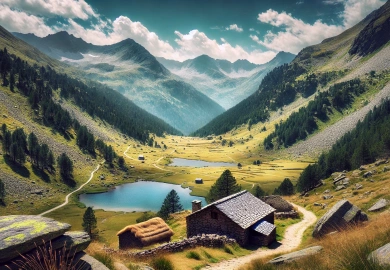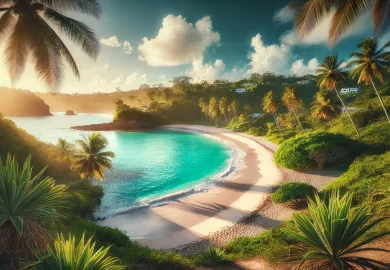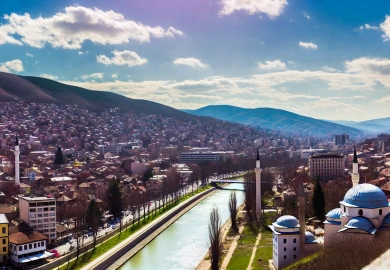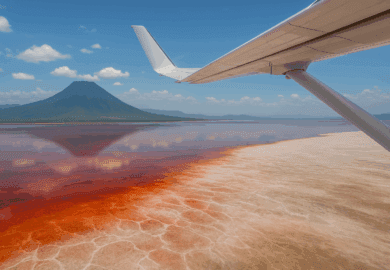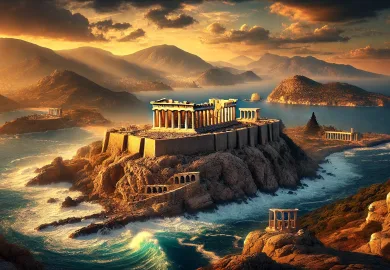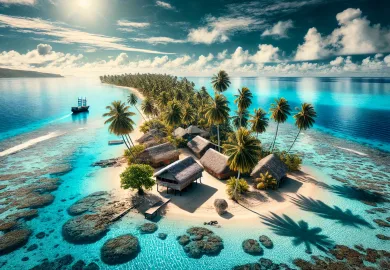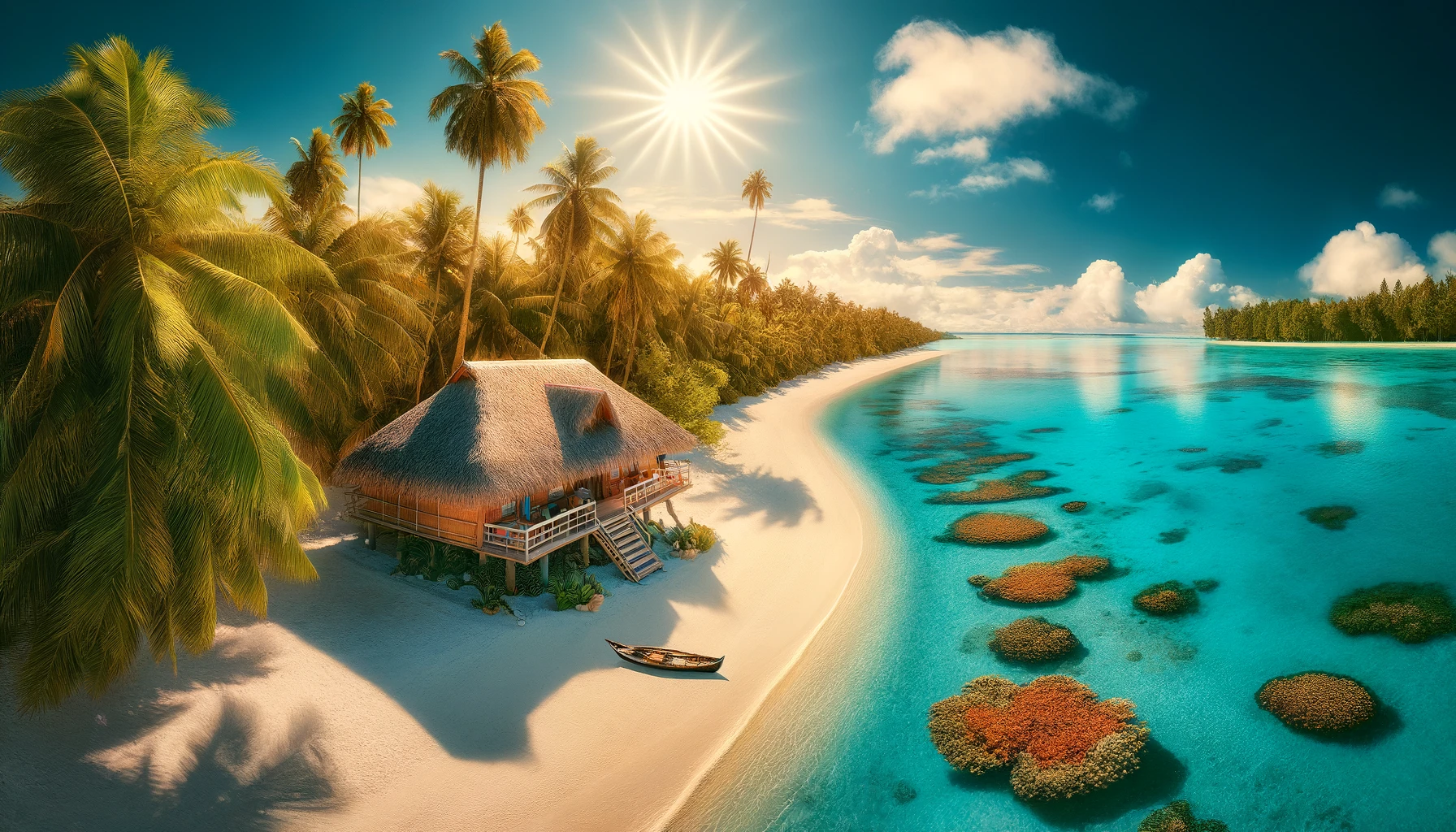
Tucked away in the vast expanse of the Pacific Ocean lies a hidden gem, far from the typical tourist trail: Kiribati. This remote island nation, composed of 33 atolls and reef islands, stretches over 3.5 million square kilometers of ocean, yet remains one of the least visited countries in the world. With its pristine beaches, vibrant culture, and unparalleled marine biodiversity, Kiribati offers an authentic experience that is a world away from the commercialized tourism hotspots. If you’re looking for a travel destination that combines natural beauty with genuine cultural encounters, Kiribati should be at the top of your list.
A Glimpse into Kiribati’s Unique Geography
Kiribati’s geography is unlike any other destination on Earth. The nation straddles both the equator and the International Date Line, making it the only country in the world to span all four hemispheres. This unique positioning means that Kiribati is one of the first places on Earth to welcome the new day, giving visitors a sense of being ahead of the world.
The country consists of three main island groups: the Gilbert Islands, the Phoenix Islands, and the Line Islands. Each of these groups offers distinct experiences, from the bustling capital of Tarawa in the Gilberts to the untouched wilderness of the Phoenix Islands Protected Area, one of the largest marine protected areas in the world. The Line Islands, with their coral reefs and crystal-clear waters, are a diver’s paradise, offering some of the most pristine underwater landscapes on the planet.
Kiribati’s low-lying atolls and islands are not just a geographical curiosity; they are also a stark reminder of the challenges posed by climate change. With most of the land just a few meters above sea level, Kiribati is on the frontlines of rising sea levels. Visiting this remarkable country not only allows you to witness its natural beauty but also to gain a deeper understanding of the environmental issues that are shaping our world.
Experiencing the Rich Culture and Traditions of Kiribati
One of the most rewarding aspects of visiting Kiribati is the opportunity to immerse yourself in the local culture. The I-Kiribati people are known for their warmth and hospitality, and visitors are often welcomed with open arms into village life. Traditional customs and practices are still very much alive in Kiribati, offering a glimpse into a way of life that has remained largely unchanged for centuries.
Dance and music are integral parts of Kiribati culture, with the traditional maneaba (community meeting house) serving as the center of social life. The dances, known as te mwaie, are performed to tell stories of the islands’ history, legends, and everyday life. These performances are often accompanied by songs sung in harmony and the rhythmic beating of a wooden slit drum. Attending a maneaba gathering is a must for any visitor, as it provides a rare opportunity to experience the community spirit and cultural pride of the I-Kiribati people.
In addition to their rich cultural traditions, the I-Kiribati have a deep connection to their environment. Fishing and coconut cultivation are central to their way of life, and traditional skills such as canoe building and navigation are still passed down through generations. Visitors can learn about these practices firsthand by participating in community activities, such as fishing trips, weaving workshops, or coconut harvesting. These experiences not only provide insight into the I-Kiribati way of life but also create lasting memories and connections with the local people.
Exploring Kiribati’s Pristine Marine Environment
For nature lovers and adventure seekers, Kiribati offers some of the most untouched and pristine marine environments in the world. The country’s remote location has helped to preserve its coral reefs and marine life, making it a haven for divers, snorkelers, and marine biologists alike.
The Phoenix Islands Protected Area (PIPA), a UNESCO World Heritage Site, is one of Kiribati’s crown jewels. Covering over 400,000 square kilometers, PIPA is the largest marine protected area in the Pacific Ocean and one of the largest in the world. This vast area is home to an incredible diversity of marine species, including over 200 types of coral, 500 species of fish, and numerous species of sharks, rays, and turtles. For those interested in marine conservation, a visit to PIPA offers a unique opportunity to witness a thriving ecosystem that has remained largely untouched by human activity.
Beyond PIPA, Kiribati’s coral atolls and lagoons offer endless opportunities for underwater exploration. The Line Islands, in particular, are renowned for their crystal-clear waters and vibrant coral reefs. The island of Kiritimati (Christmas Island) is a world-famous destination for bonefishing, while Tabuaeran (Fanning Island) offers some of the best surfing in the Pacific. Whether you’re an experienced diver or a beginner snorkeler, Kiribati’s waters promise an unforgettable experience.
Practical Tips for Visiting Kiribati
While Kiribati offers a wealth of natural beauty and cultural experiences, it’s important to be well-prepared for your visit. Due to its remote location and limited infrastructure, traveling to Kiribati requires careful planning and a flexible mindset.
Firstly, flights to Kiribati are limited, with most international visitors arriving via Fiji or Hawaii. The main gateway is Bonriki International Airport in Tarawa, but there are also flights to Kiritimati in the Line Islands. Given the infrequent flight schedules, it’s advisable to book your flights well in advance and allow for extra time in your itinerary to account for any delays.
Accommodation options in Kiribati are modest, ranging from guesthouses and lodges to basic hotels. While you won’t find luxury resorts here, the lack of commercial development is part of Kiribati’s charm. Staying in local accommodations also provides a more authentic experience and supports the local economy. It’s worth noting that some of the outer islands have very limited facilities, so it’s important to bring essential supplies with you and to be prepared for basic conditions.
Finally, respect for local customs and the environment is crucial when visiting Kiribati. The I-Kiribati are deeply connected to their land and sea, and visitors are expected to follow local etiquette, such as dressing modestly and seeking permission before entering villages or sacred sites. Additionally, given the environmental challenges facing Kiribati, it’s important to minimize your impact by following sustainable travel practices, such as reducing waste, conserving water, and supporting eco-friendly initiatives.
Visiting Kiribati is not just a journey to a remote destination; it’s an opportunity to connect with a unique culture, witness incredible natural beauty, and gain a deeper understanding of the challenges facing our planet. For those who seek an authentic and transformative travel experience, Kiribati offers a world of discovery that few have had the privilege to explore.

